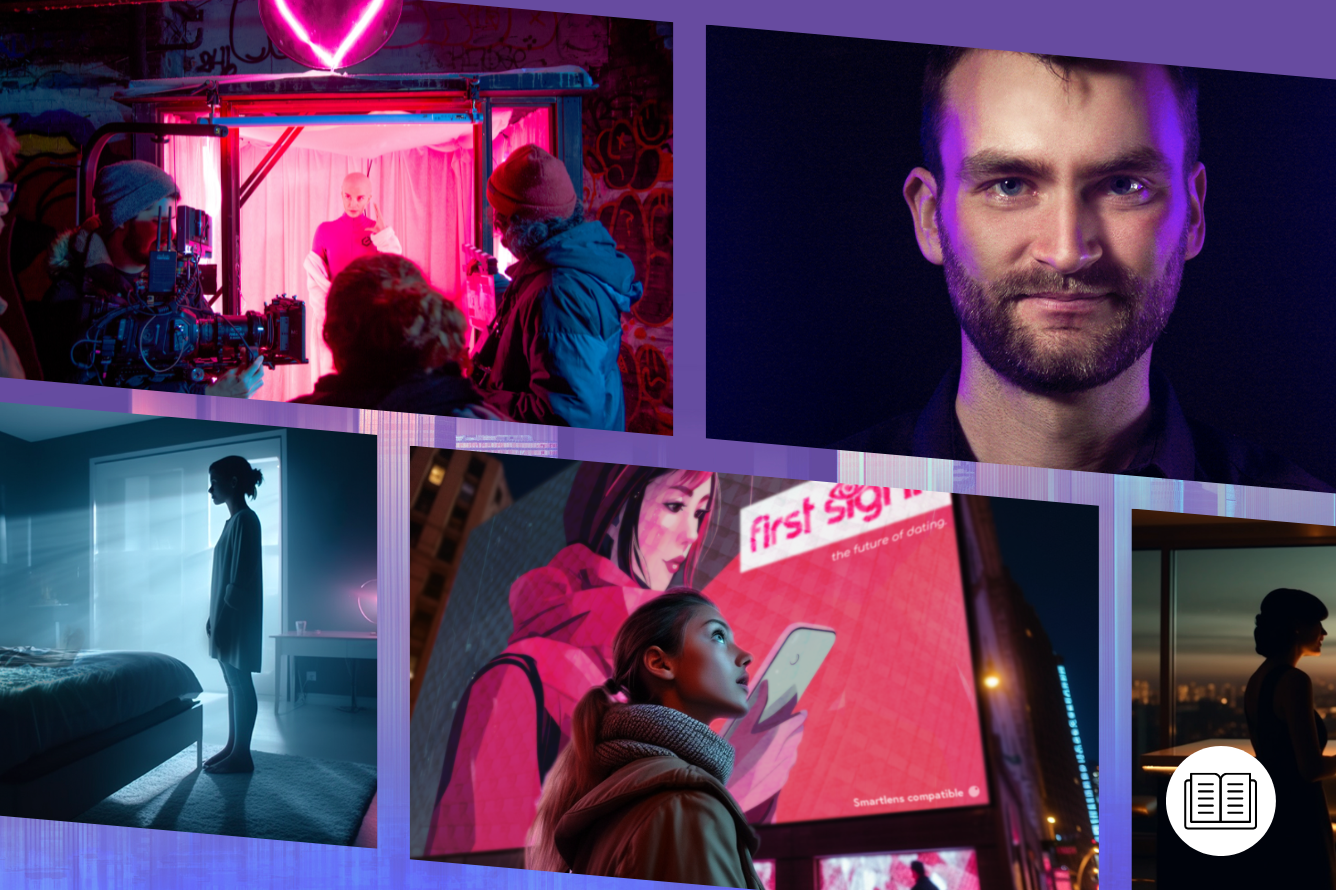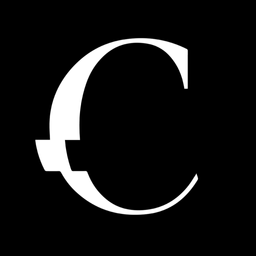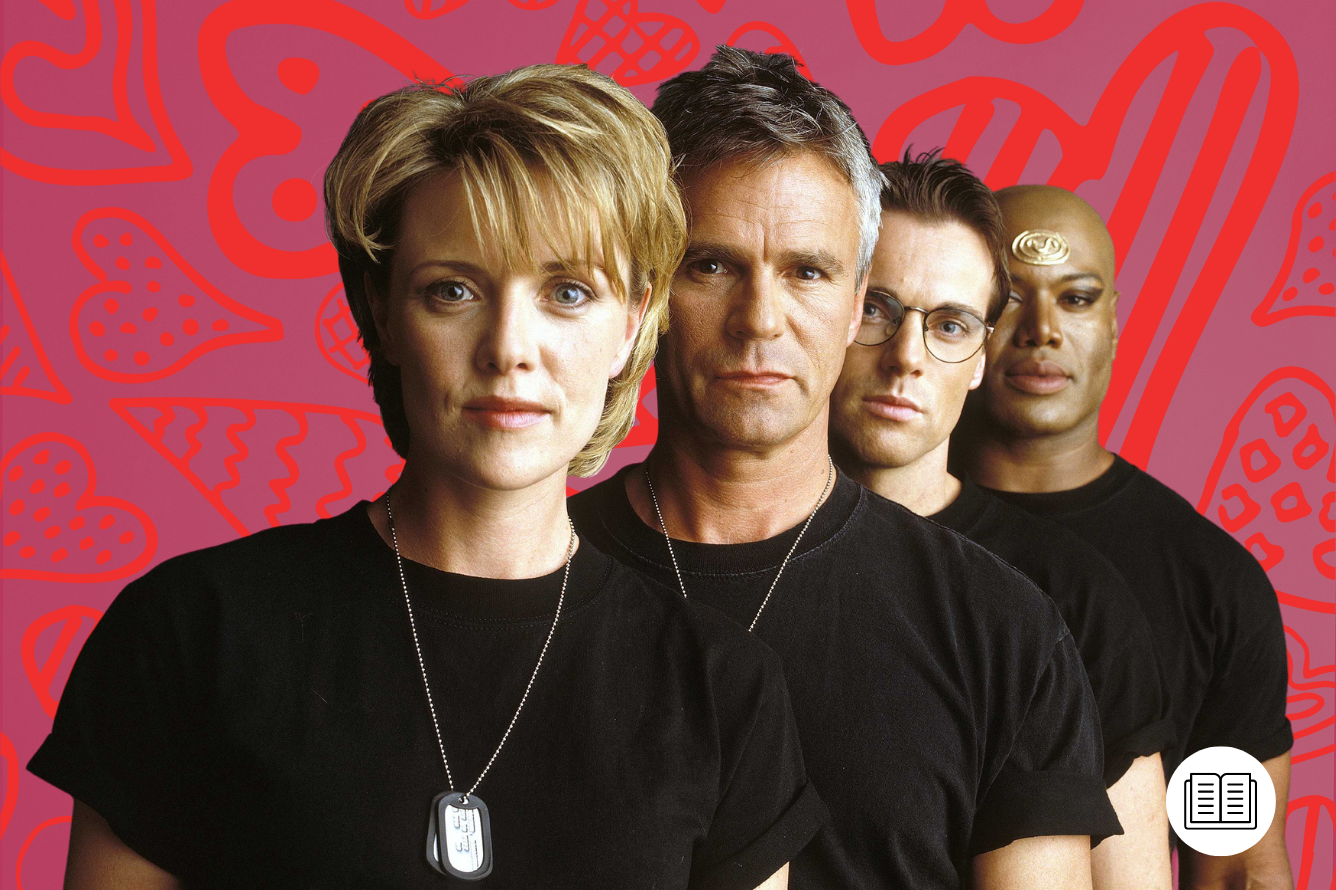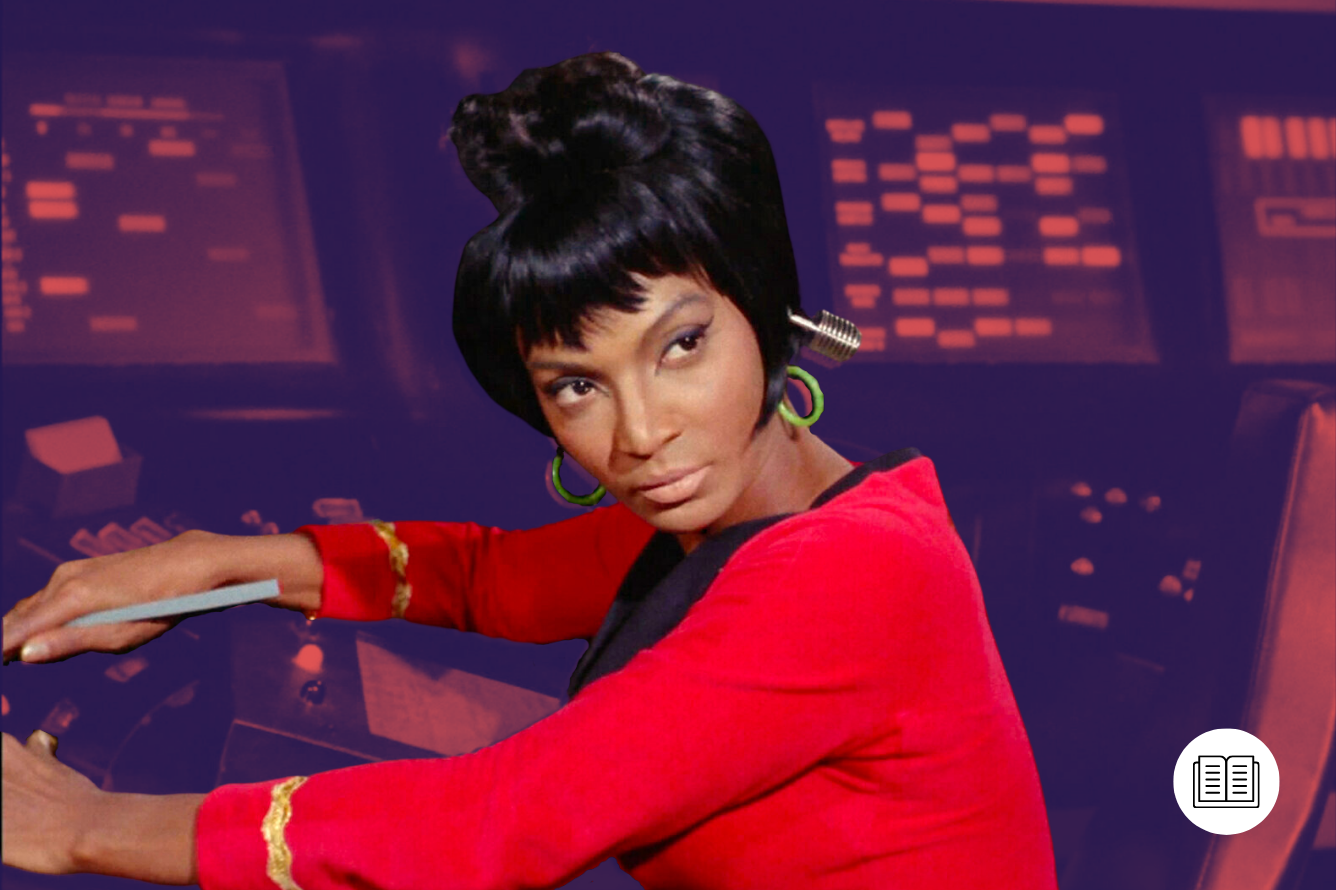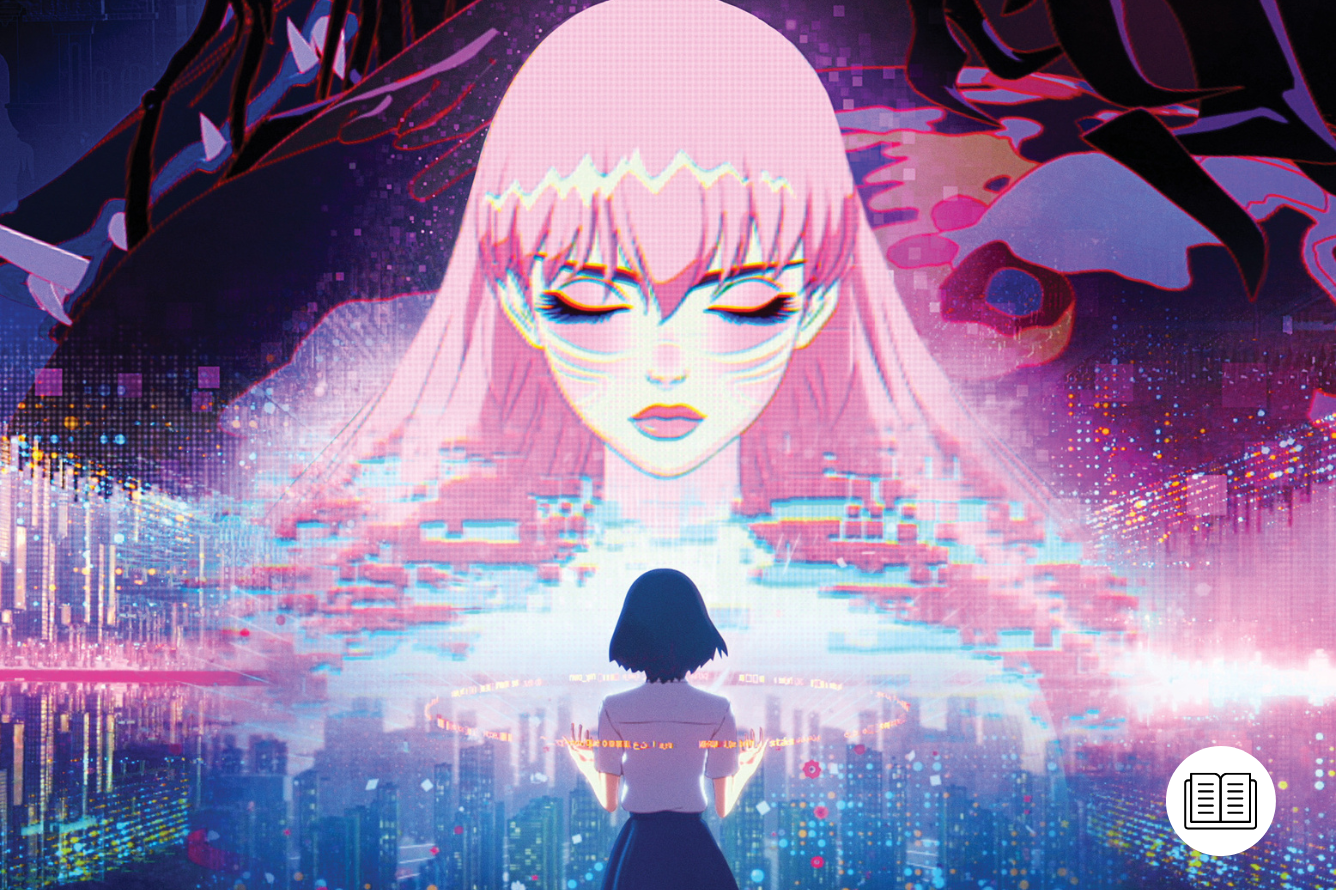I’m Andrew, a video editor, and independent filmmaker, and like most of you reading this article, I’m a huge fan of science fiction films.
Growing up, the worlds of Star Wars, The Matrix, and The Fifth Element captured my imagination to such an extent that they’ve shaped the path I’ve taken in life. Not only was I captivated by their visions of the future, concepts of free will and simulations, or space battles in a galaxy far, far away, but how all these ideas were brought to life on screen.
I vividly remember watching Doctor Who Confidential after the main show and being fascinated by the amount of work that went into the previous 45 minutes. I began devouring the special features of my double-disk DVDs (remember those?), and discovered the many roles and departments involved in creating my favorite fictional worlds. It was at that point I knew I wanted to be a storyteller, and I’d like to share my behind-the-scenes experiences and challenges of making my own sci-fi films.
My most recent project Venus, a cyberpunk-inspired sci-fi short, was a festival hit and now has 250k views on the DUST YouTube channel, and I’ve just started working on a new film in the vein of Black Mirror, called First Sight.
It’s been a long road reaching this point, though! I started writing and directing my own shorts over a decade ago and continued to do so throughout university. Those projects wouldn’t exactly have a place in my showreel these days, but I did always try to push their zero-budget productions as far as possible, often writing stories with various apocalyptic scenarios (a deadly asteroid, nuclear war, zombies…).
Check it out on Kickstarter.
Starting with The Watchers
One of my first big projects was called The Watchers, about four astronauts stranded on board the International Space Station while the Earth is destroyed – best to start off small, right? It was a mad idea on a micro-budget, but sci-fi is all about ambition. I had worked with most of the crew at university, and this was the first time we fresh-faced graduates had decided to make a “proper” short. The much-needed professional help came from our production designer, who built a cross-section of the ISS (inside a church, the only space the writer/producer happened to have free access to), and I volunteered my own laptop as part of the set dressing. See how well that went in this gif:
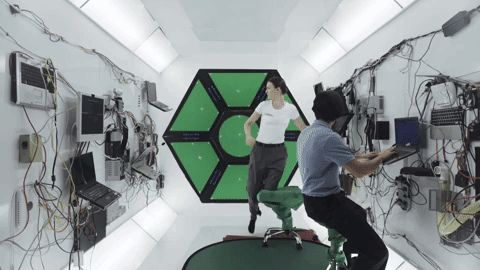
After making Sunshine (2007), Danny Boyle said most directors will make one space film and rarely another, for all the technical headaches involved. Zero gravity is the main challenge that comes to mind; a staple of sci-fi but never an easy one to film. In the 1950s classic Destination Moon (1950), wires were used to fairly convincing effect, whereas 2013’s Gravity used CGI. Here’s a fun comparison of two very similar scenes 60 years apart.
With nothing to support the actors from above and several thousand pounds short of affording convincing CGI, we decided wheely chairs covered in green fabric was the best way to pull it off. For movement, we’d use a high-tech method of pushing the chair with a broom, then it’s on the actors to do the rest of the floating while the chair is scrubbed out during post-production.
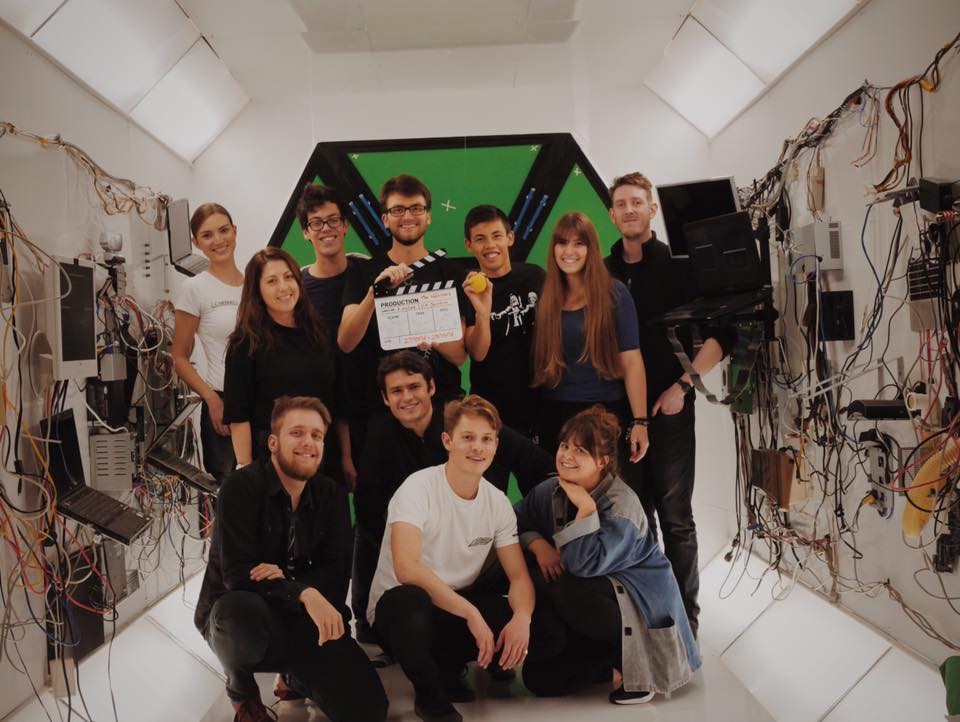
I’m now a post-production specialist with far more experience in VFX and compositing since then, but I learned most of the skills I use today on The Watchers simply by being in the deep end. The film needed finishing and you can learn anything on YouTube, so I very slowly got to grips with After Effects and Blender. Special effects are so key to the genre and were a big part of my interest in the sci-fi filmmaking process, and it’s always exciting (but never easy) working out the best way to pull them off – especially when combining practical and CGI.
The Watchers was created as part of a collaborative feature film called Impact 50, an anthology of 50 stories about the last few hours on Earth, and it was the first time seeing my work on a big screen at Sci-Fi London at the Philip K. Dick Film Festival, which was a special moment.
Making Cyberpunk Short Film Venus
A while after The Watchers, I directed, co-wrote, co-produced, and edited Venus – I didn’t have a problem delegating (honest!), but on an independent level I’m naturally the most passionate about the project and the most willing to sink months into it. Venus was a very different filmmaking process, not just because I had much more experience behind me with a much bigger team and crowdfunded budget, but because it was another variety of sci-fi to bring to life: an urban dystopia akin to Blade Runner. The story involves a girl being revived into a synthetic body, and finding herself on the run from the violent authorities.
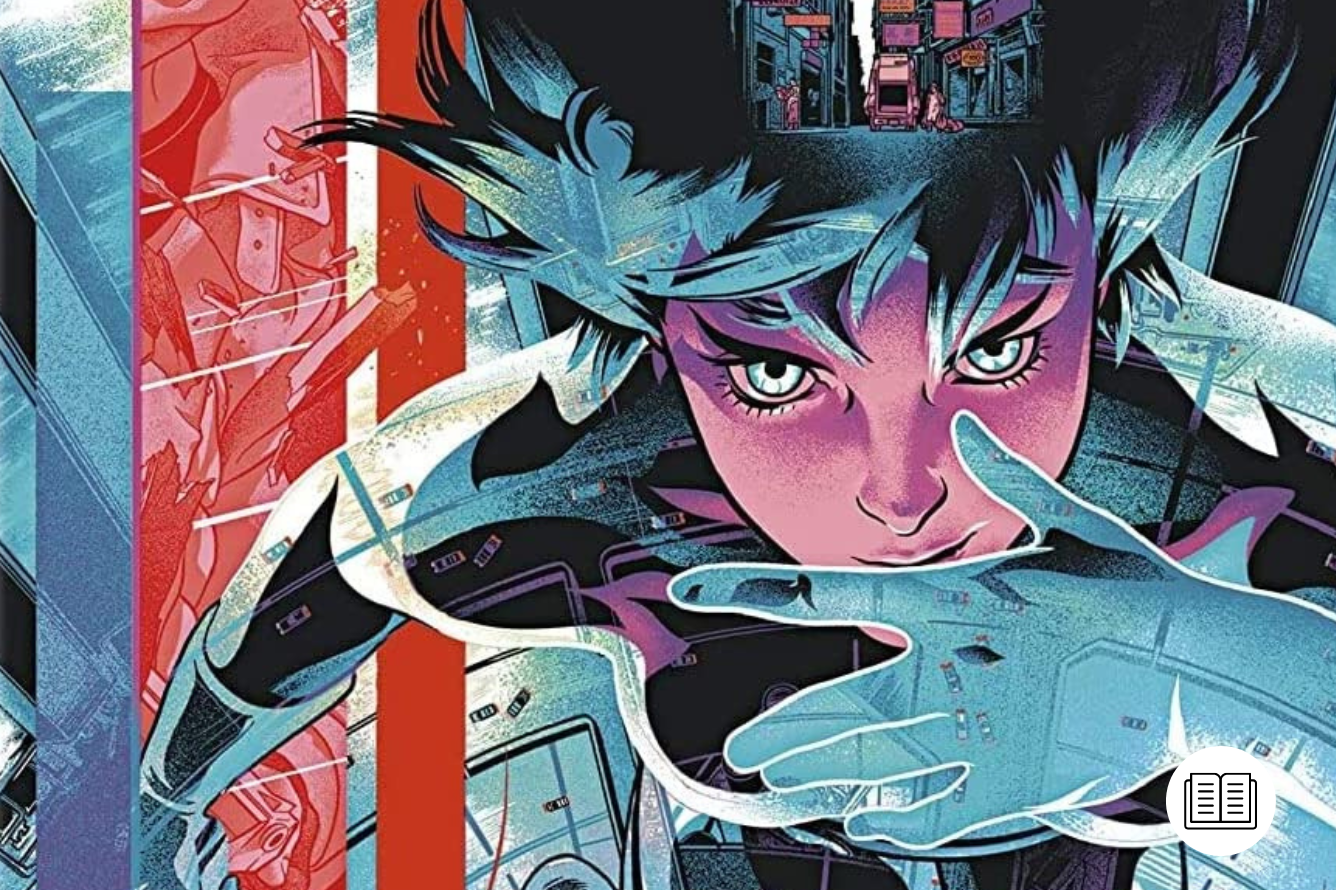
Locations play such an important part in creating a believable and immersive futuristic world, and this project was a step up from the cozy space station built in a church. Starting with the most pleasant shoot day, we used a beautiful lavender field for the story’s ‘simulation’ scenes. Shooting outside in the UK is always a risk, but we were lucky enough to have sunshine between two days of downpours.
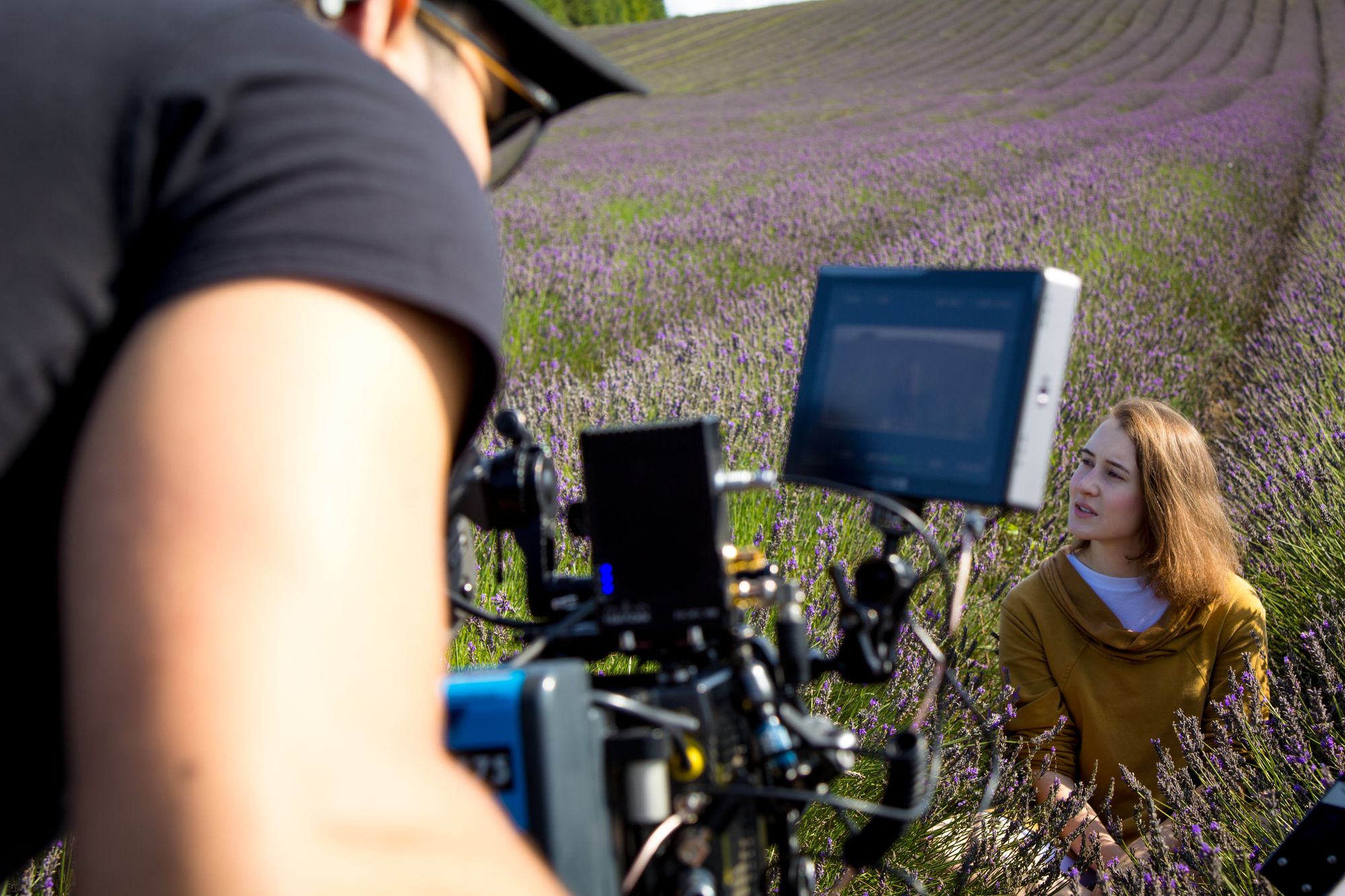
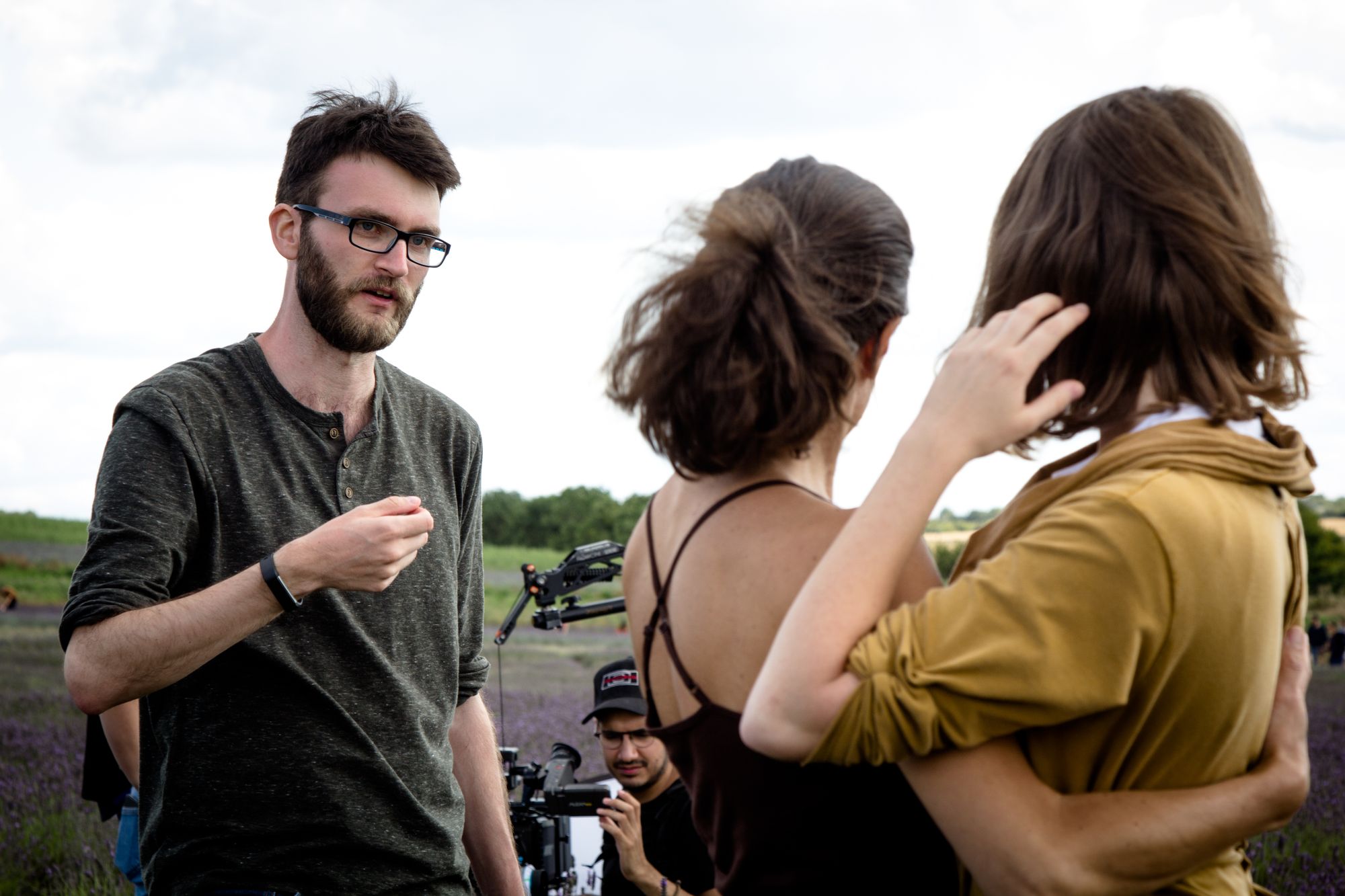
The impressive alley location rocketed our production value; there are very few New York-style alleys in the UK and I consider it a miracle I managed to find it locally. The weather during the four consecutive outdoor night shoots was less miraculous, unsurprisingly for the South coast in winter, and the cast and crew had to contend with being drenched from both the natural heavy rain and a rain machine, as normal raindrops don’t show up well on camera. One of the lights broke due to water damage (which the DP mercifully didn’t tell me until after the shoot and still made it look stunning), and it wasn’t easy keeping up everyone’s morale at 4 am, though I suppose it did make us feel like we were living the dystopia. The alley booth also barely survived and began leaking on the final day, and the glass-shattering stunt was the most stressed I’ve ever been on set – we wanted two takes, and each plane of breakaway glass cost enough to still make me sweat.
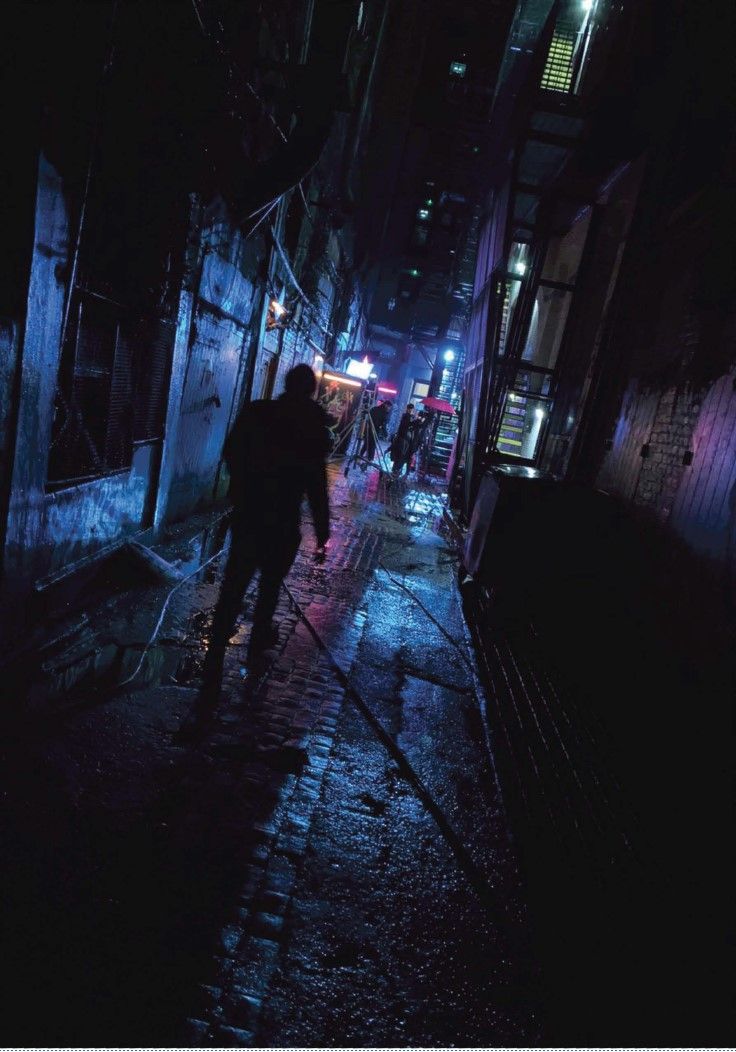
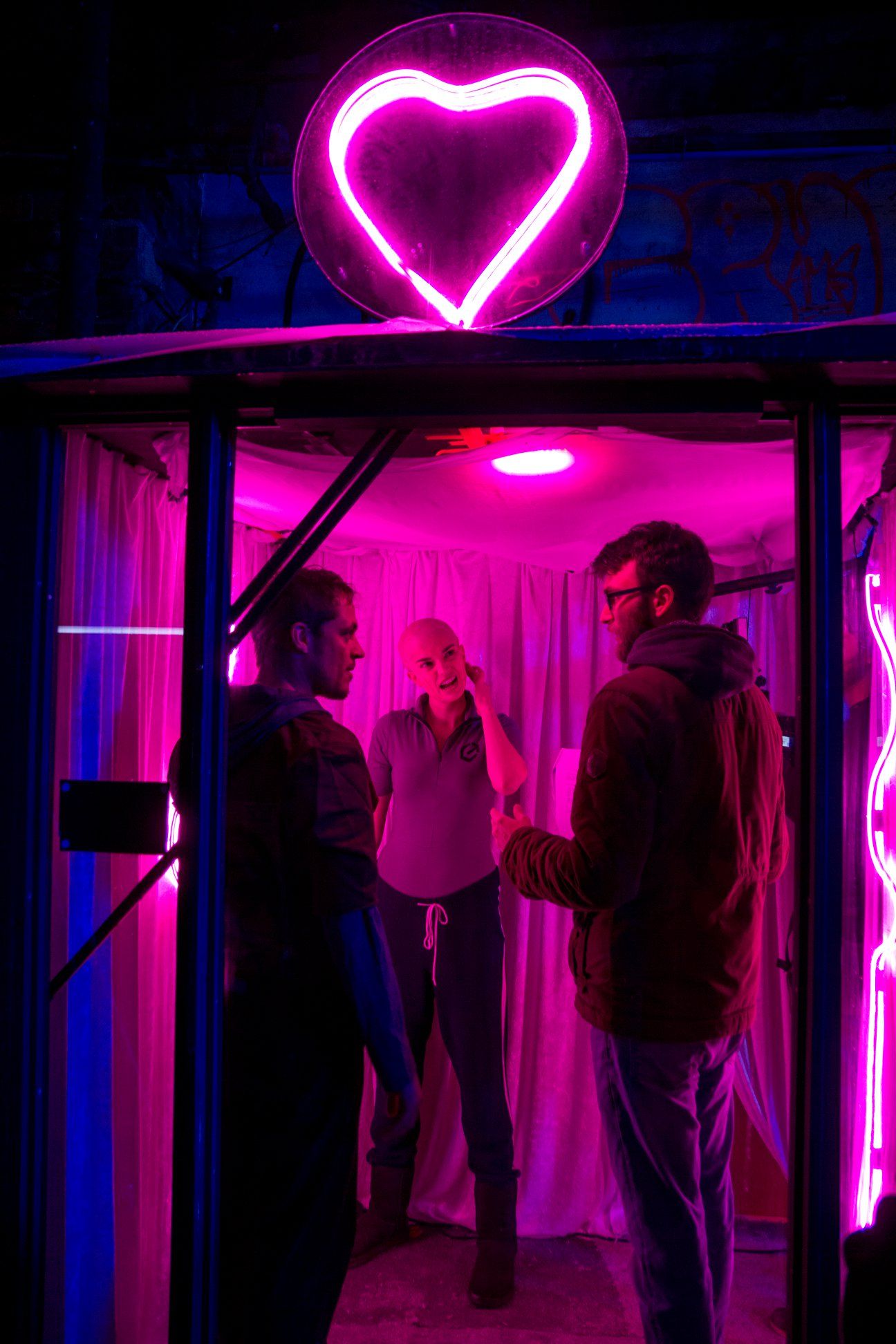
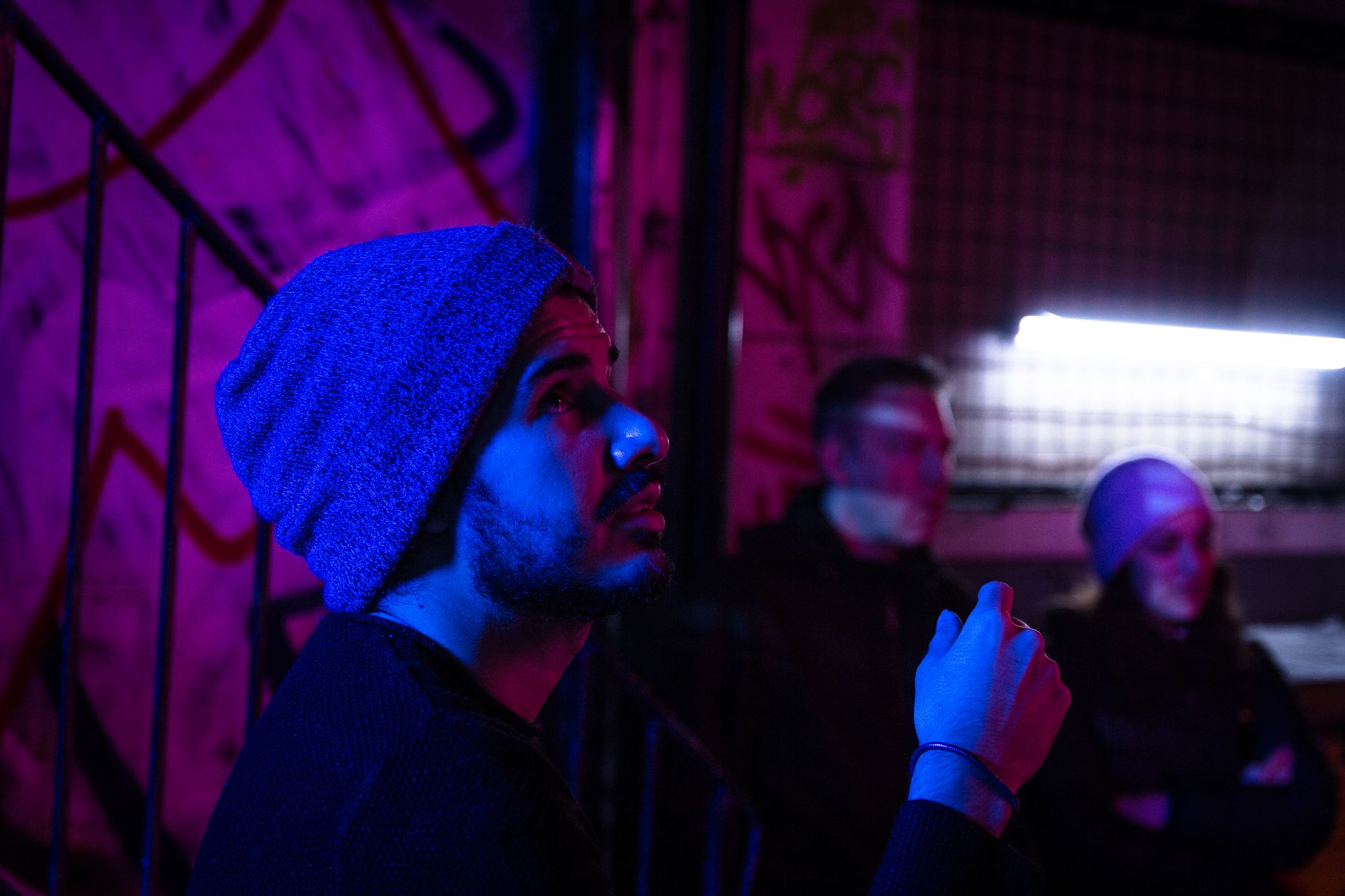
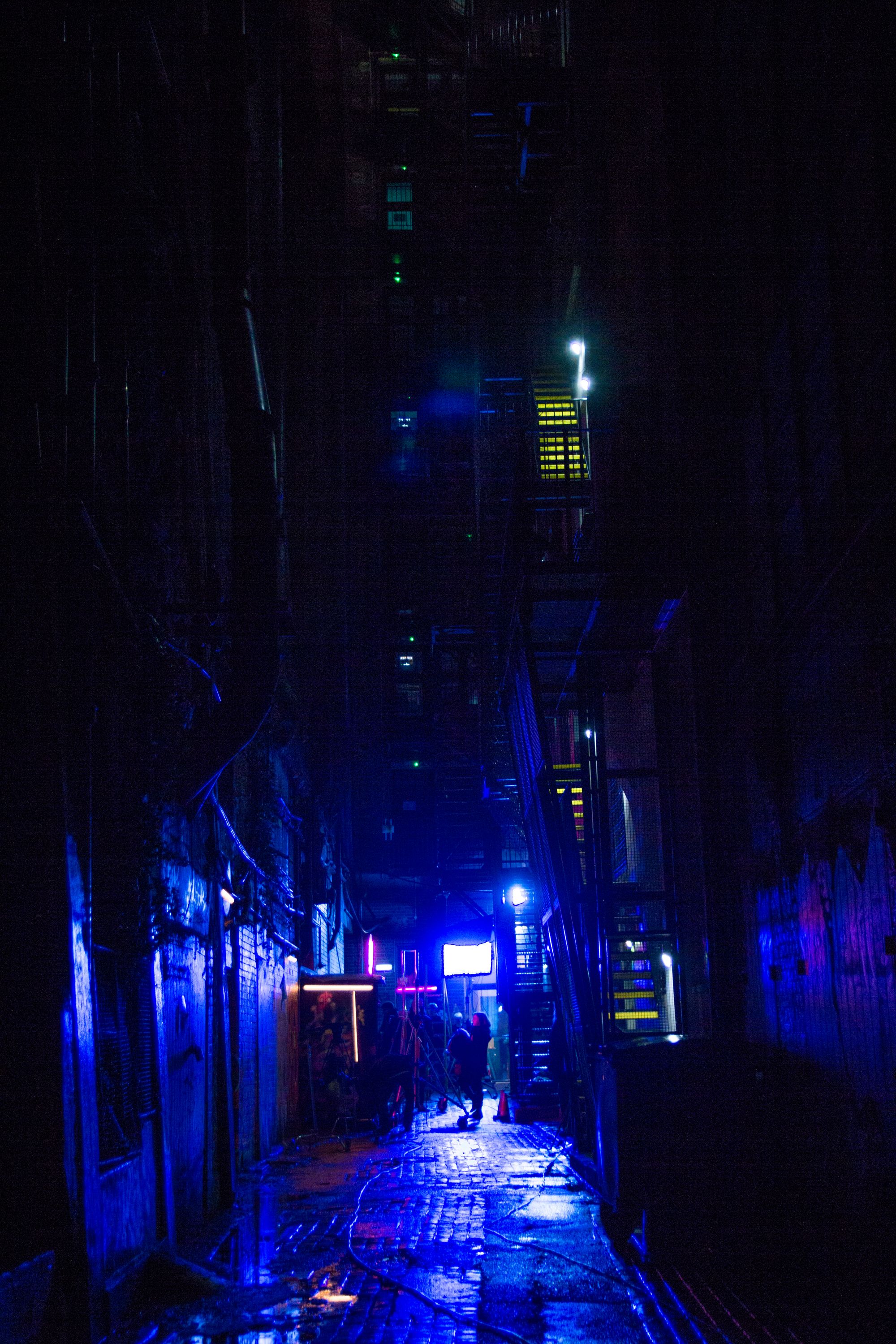
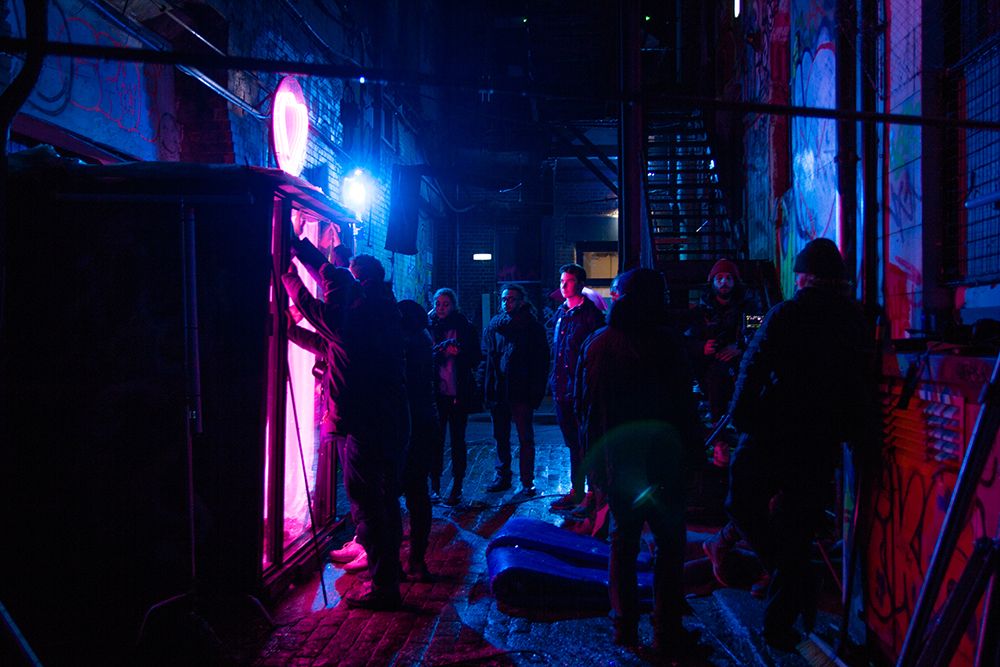
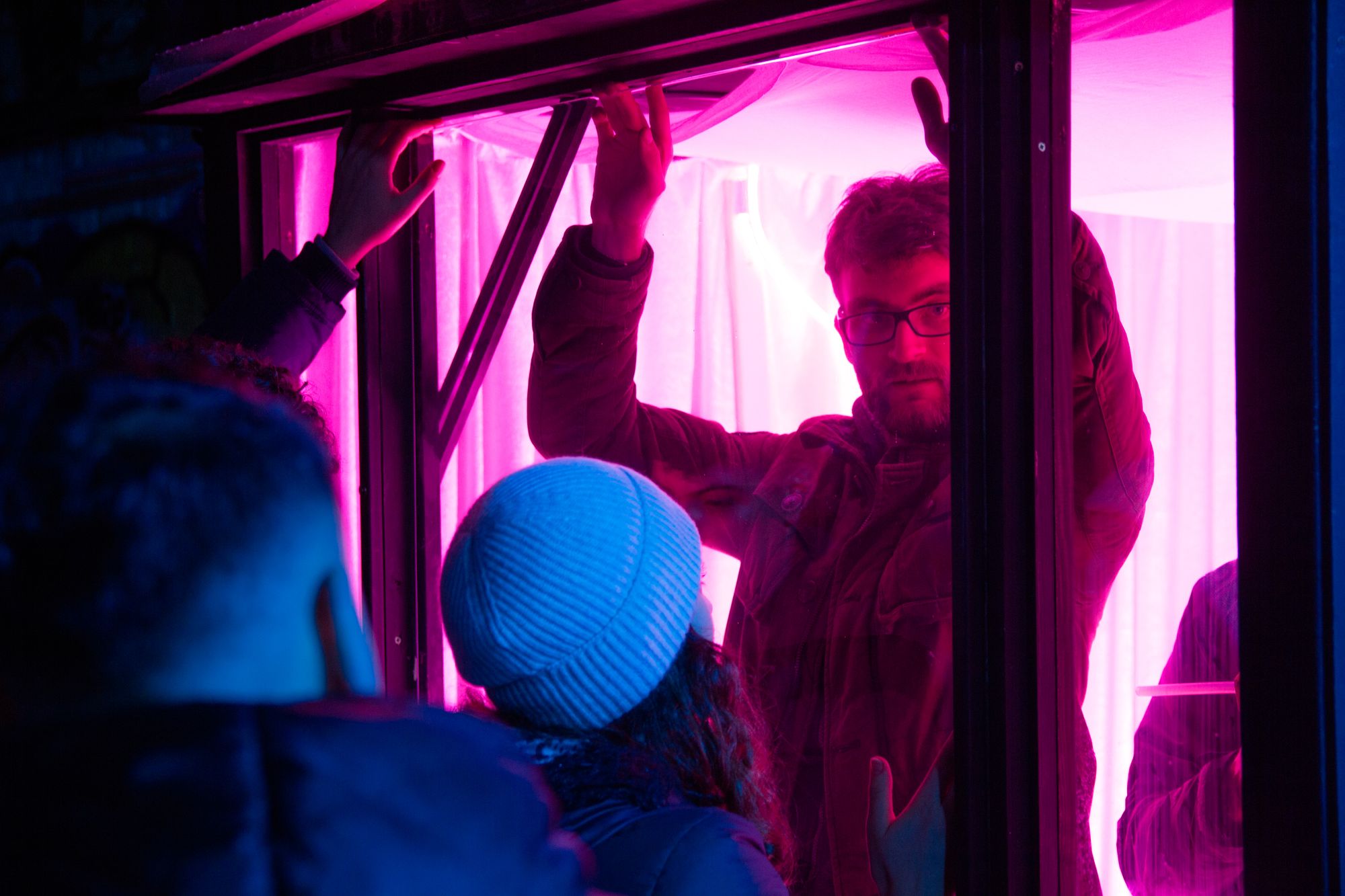
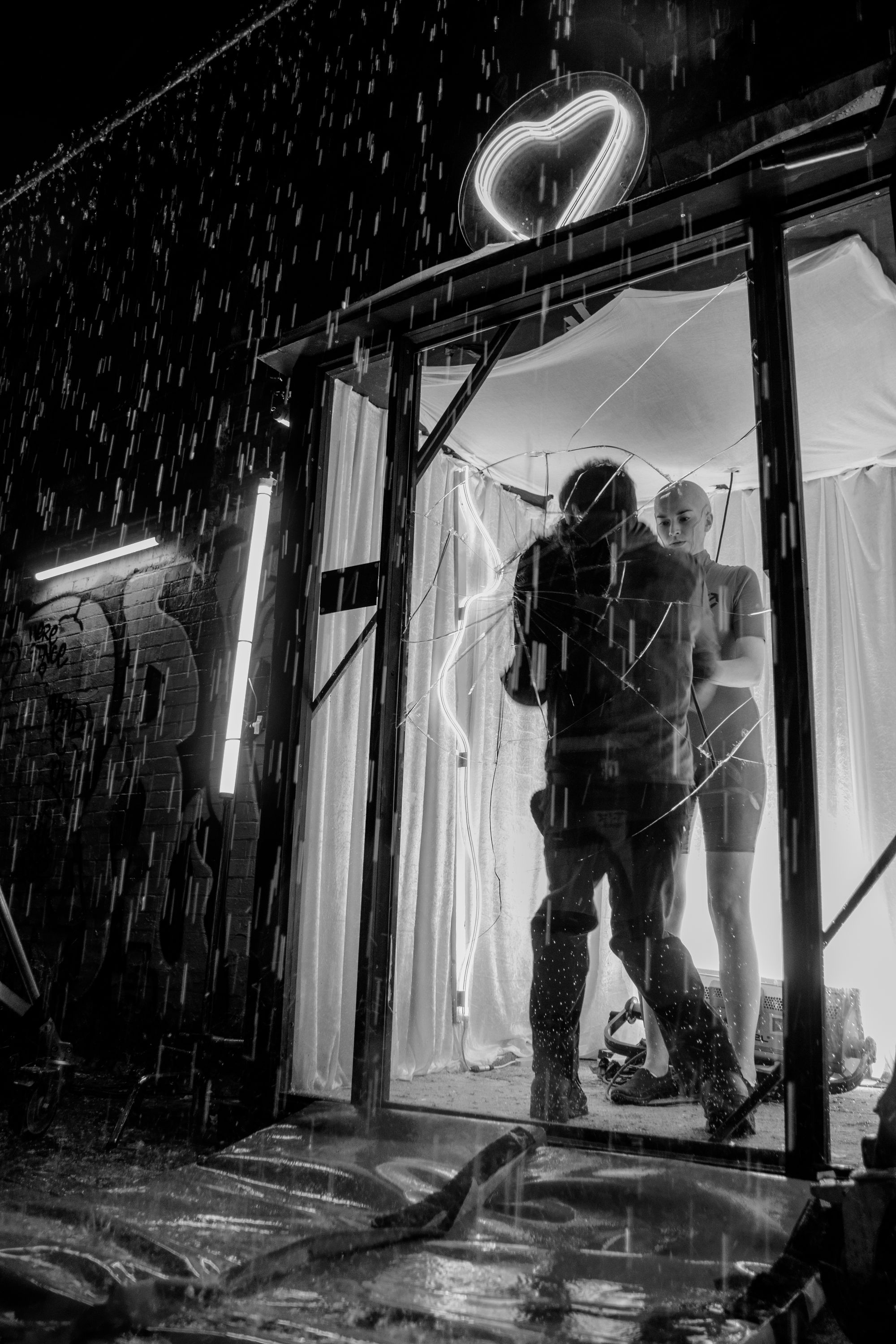
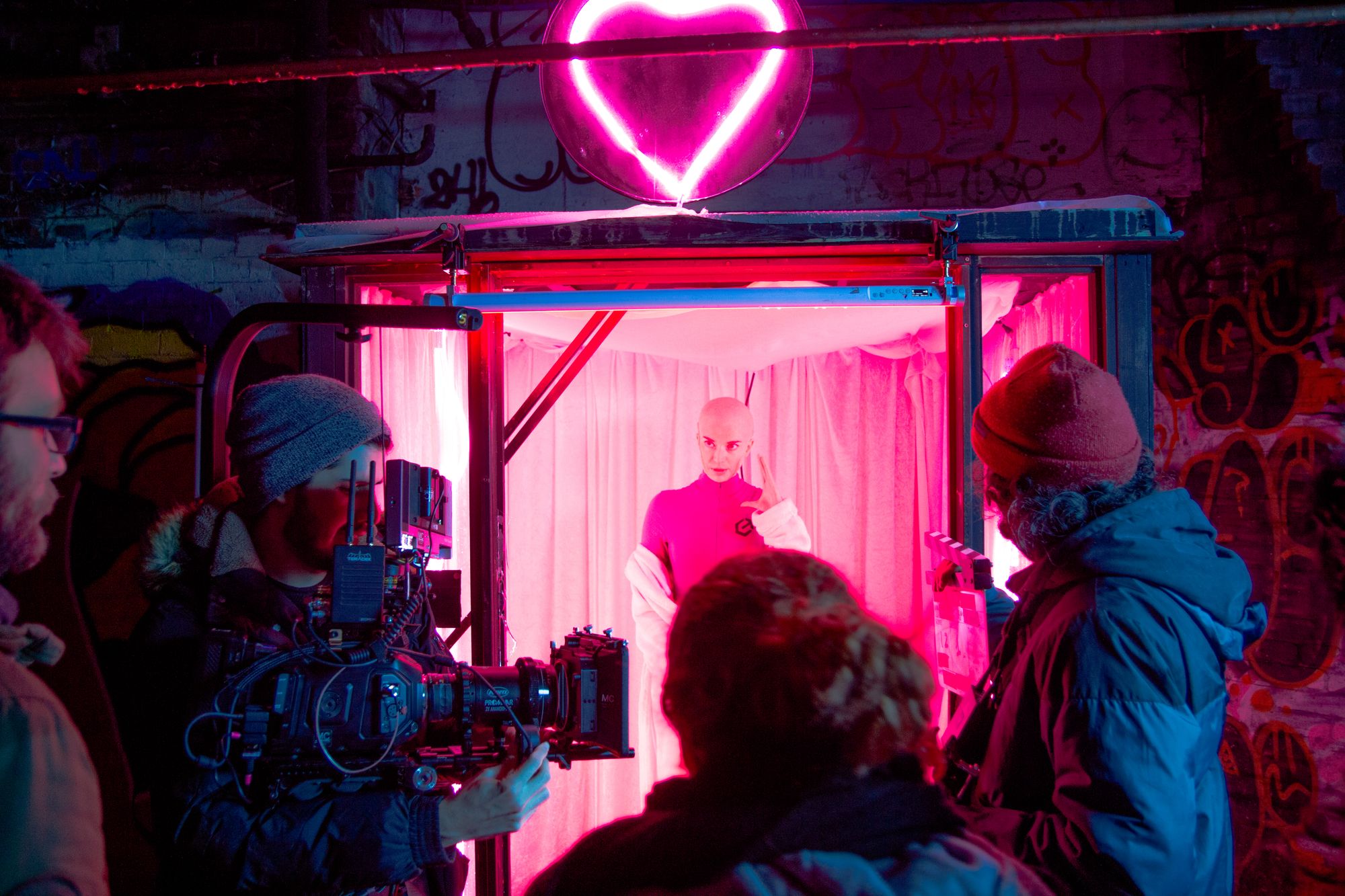
Not long before the shoot, we also realized we weren’t allowed to heat the very chilly derelict interior locations, either with propane for safety reasons or electric since the ancient circuit breaker couldn’t handle both lighting and heating. We resorted to thermals and covering the thinly costumed cast in dressing gowns and hot water bottles.
There were so many chaotic elements involved, especially on a budget that was small compared to the scope and vision of the production, but it all came together thanks to a brilliant team and sheer determination. I completed a lot of the VFX myself, building off the skills I’d already learned from The Watchers and additional projects since then, and picked up plenty of new ones.
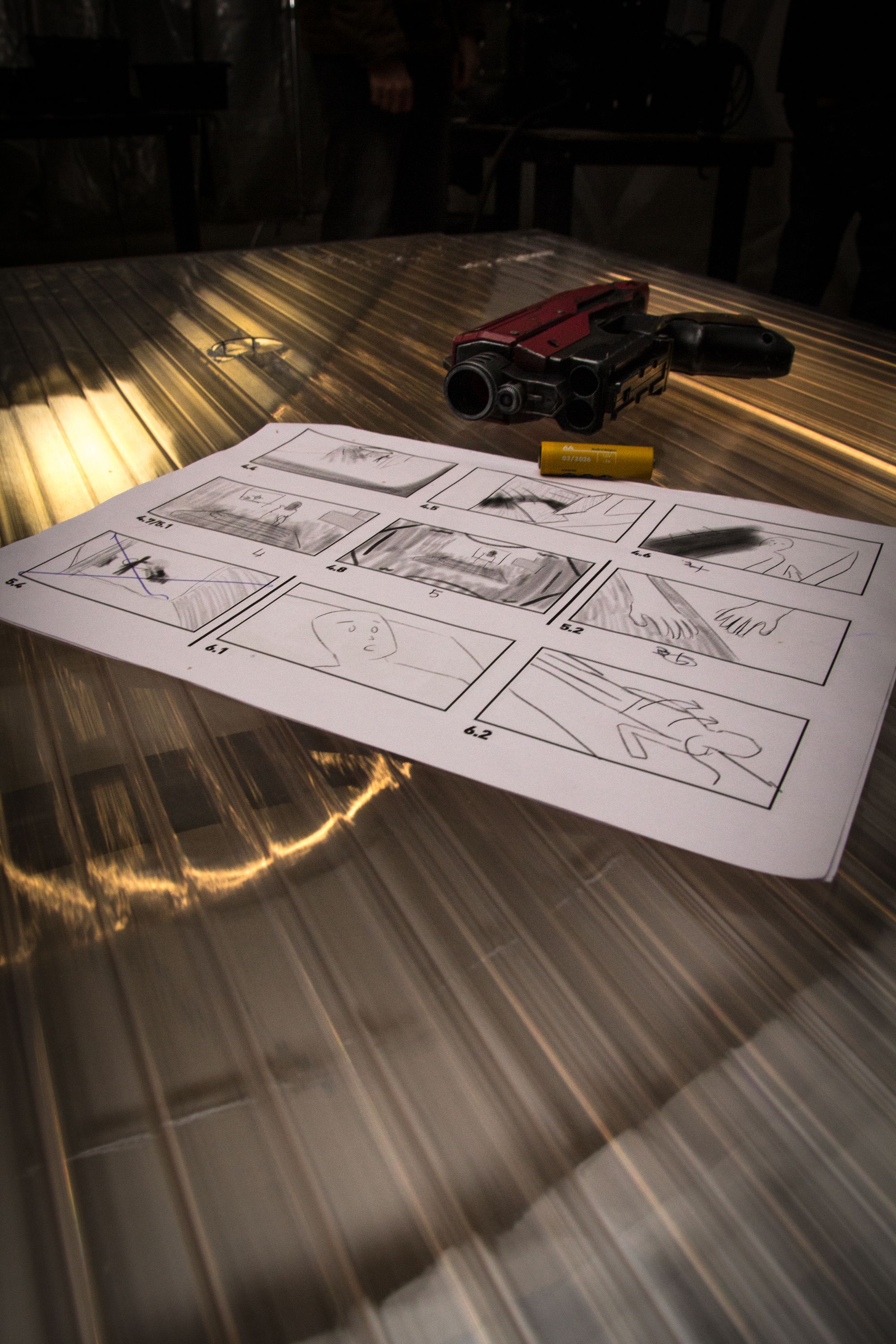
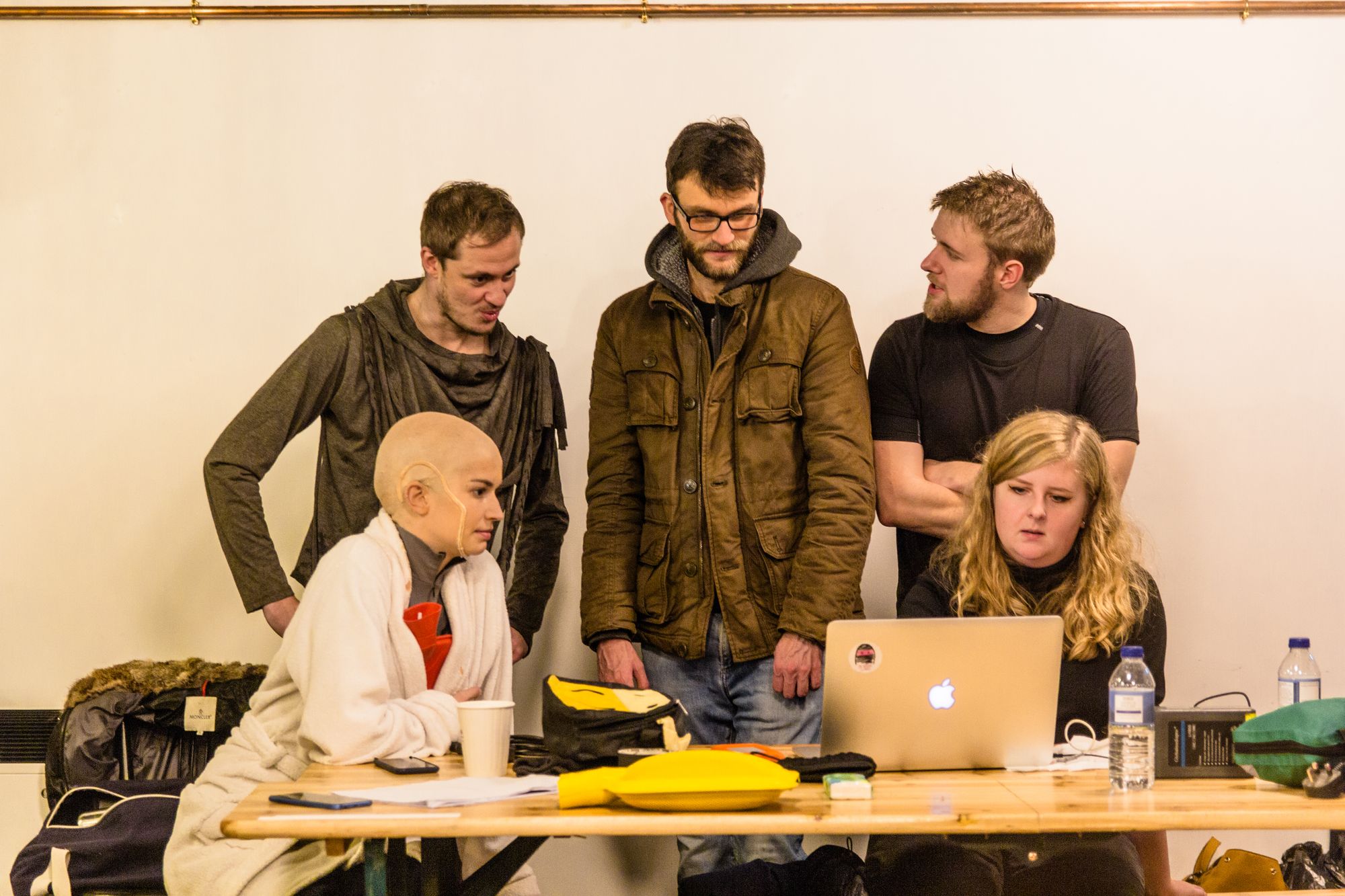
Looking back at these two examples of shooting sci-fi at an independent level, my advice for anyone looking to make their own film is to tell the story you want to tell but understand what’s feasible within your budget, and how you can push it as far as possible. Be ambitious but not unrealistic, otherwise, you’ll either stretch yourself too thin and make something you’re not satisfied with, or you’ll spend far too many years making it (I’ve done both). Planning is everything, and having a close-knit team willing to go above and beyond is also important, as it can be a lonely process.
The Advantages of Kickstarter
Filmmaking is unavoidably expensive, sci-fi especially so, and even Hollywood directors would say their multi-million dollar budgets are never enough. To fund Venus, I chose the crowdfunding path via Kickstarter. There are dozens of film funds out there, but they’re hugely competitive and from my experience tend to focus less on genre fiction like sci-fi sadly. I didn’t want to hold out for approval to tell this story and I knew there were already millions of sci-fi/cyberpunk fans across cyberspace, so it made sense to try to connect an audience who might be excited to watch and support independent filmmaking. It was a success and I’m so grateful to every backer, it was a wonderful feeling to have so many people believe in the story and follow its production process!
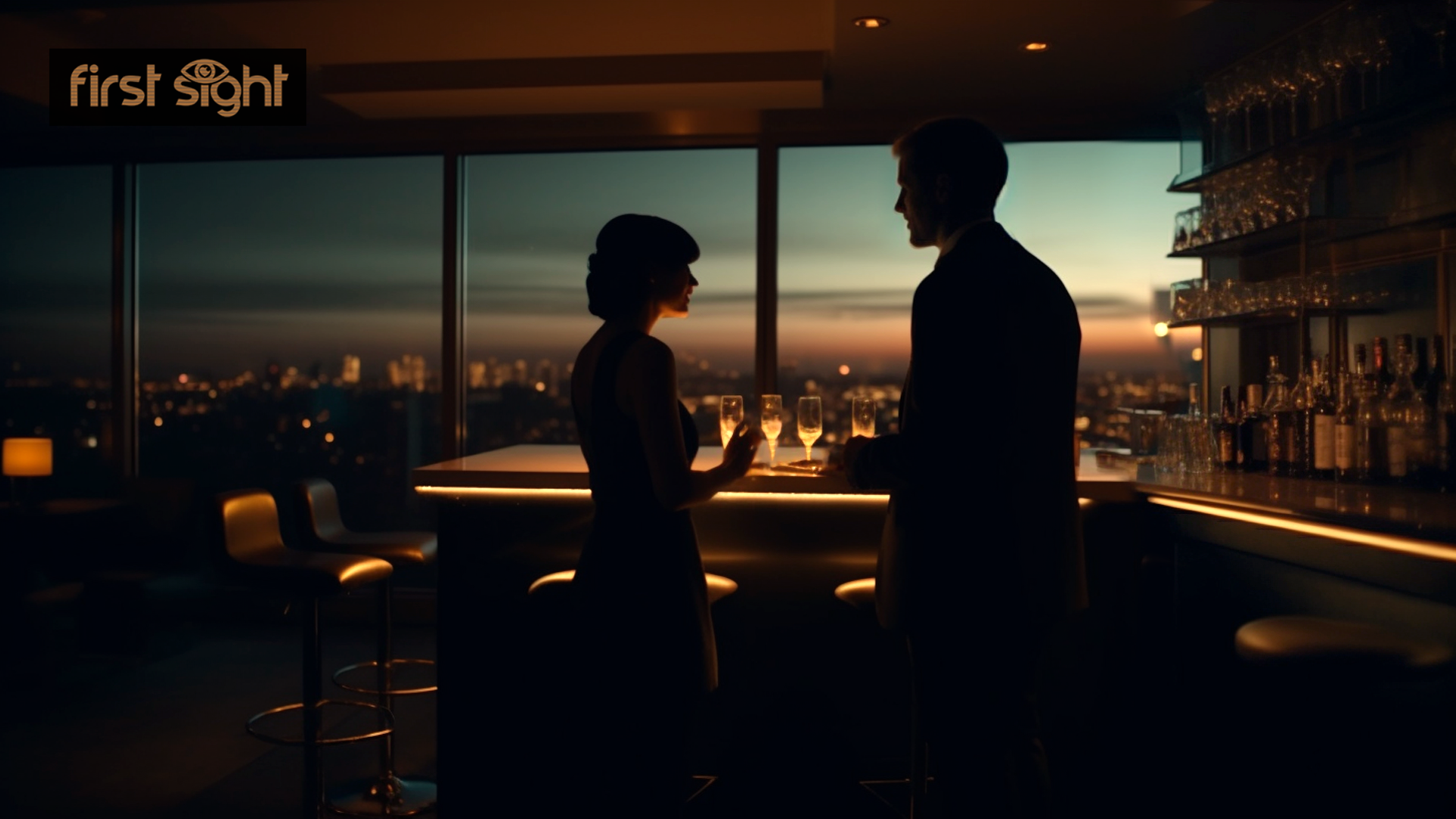
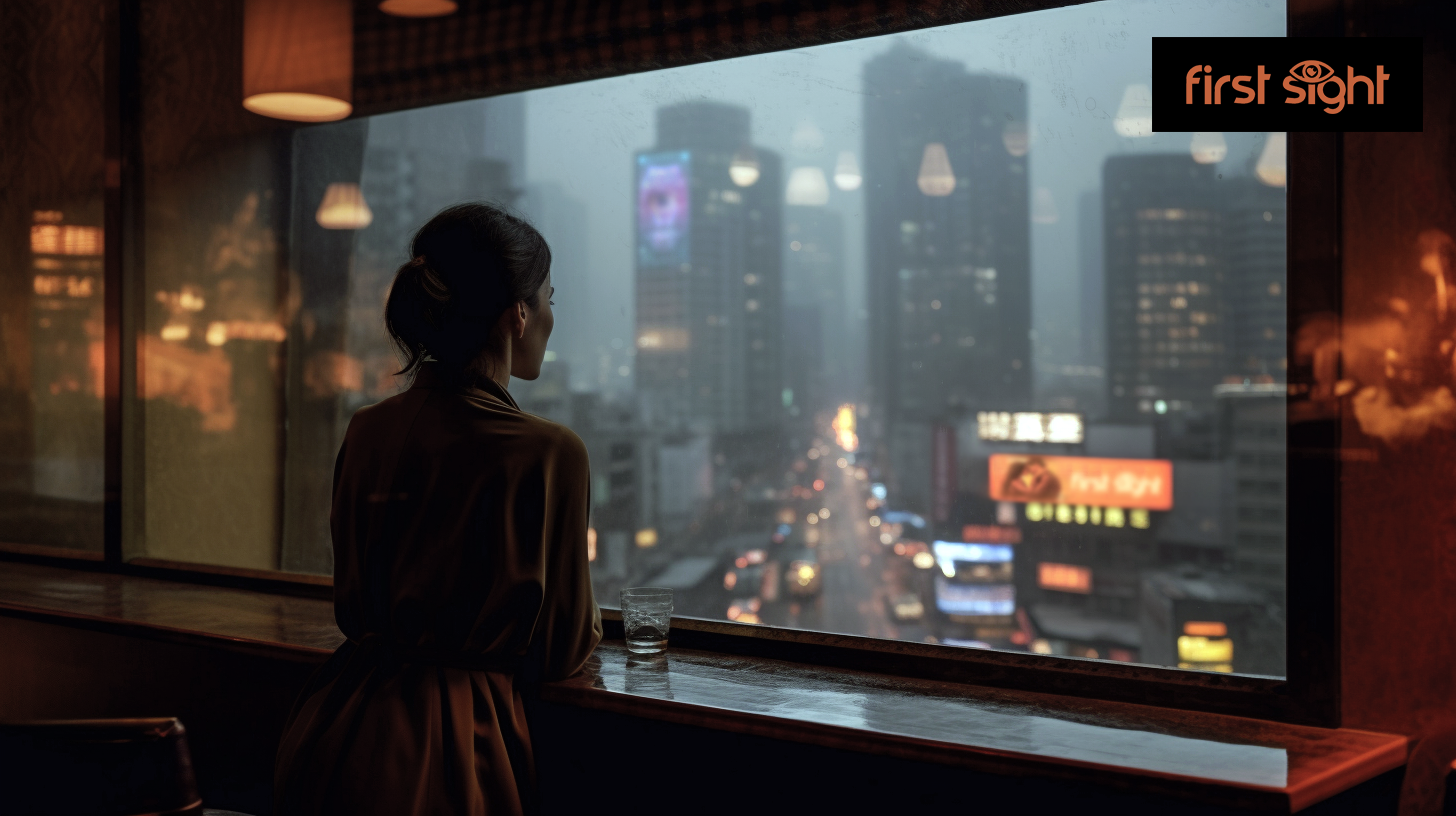
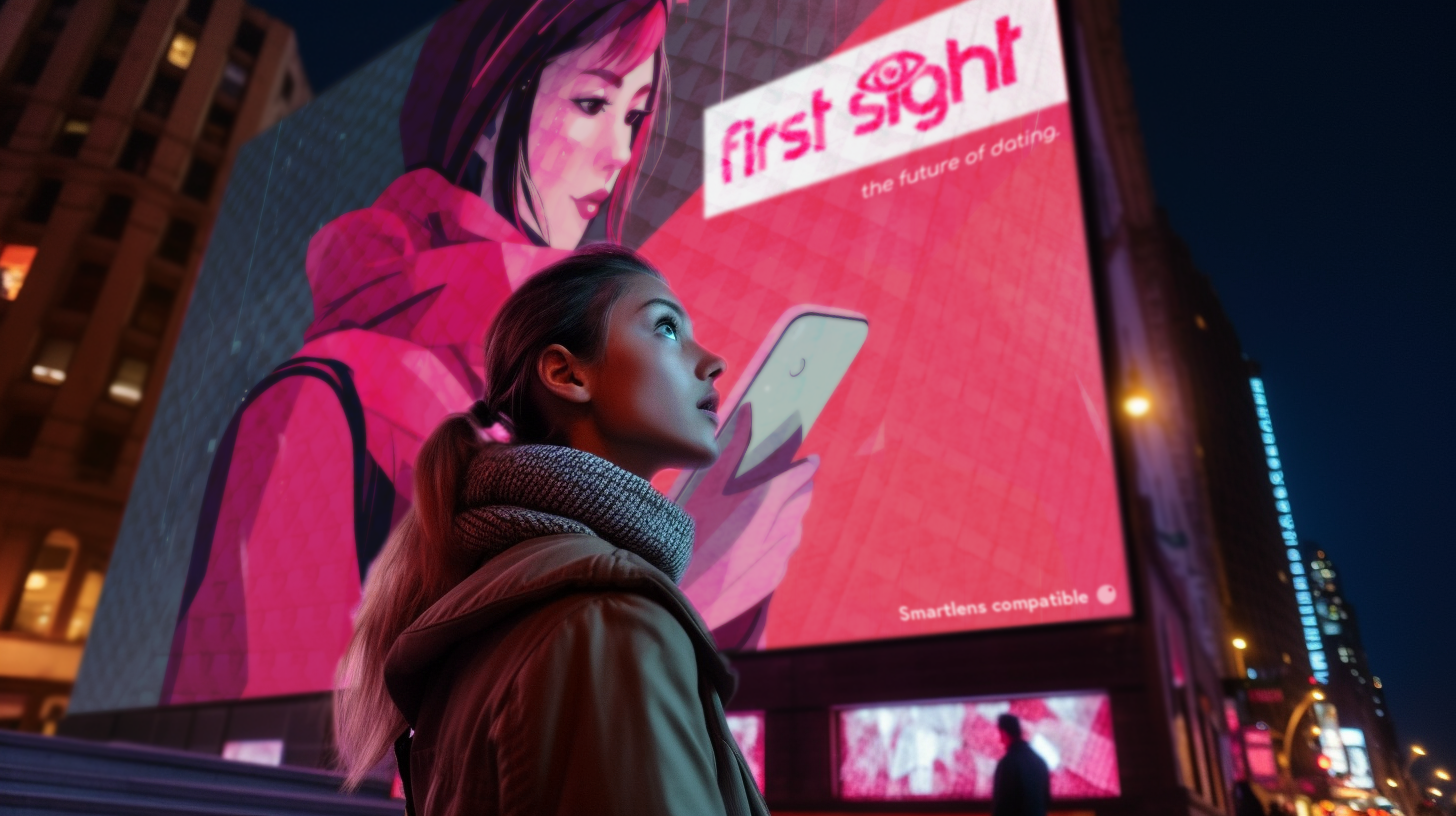
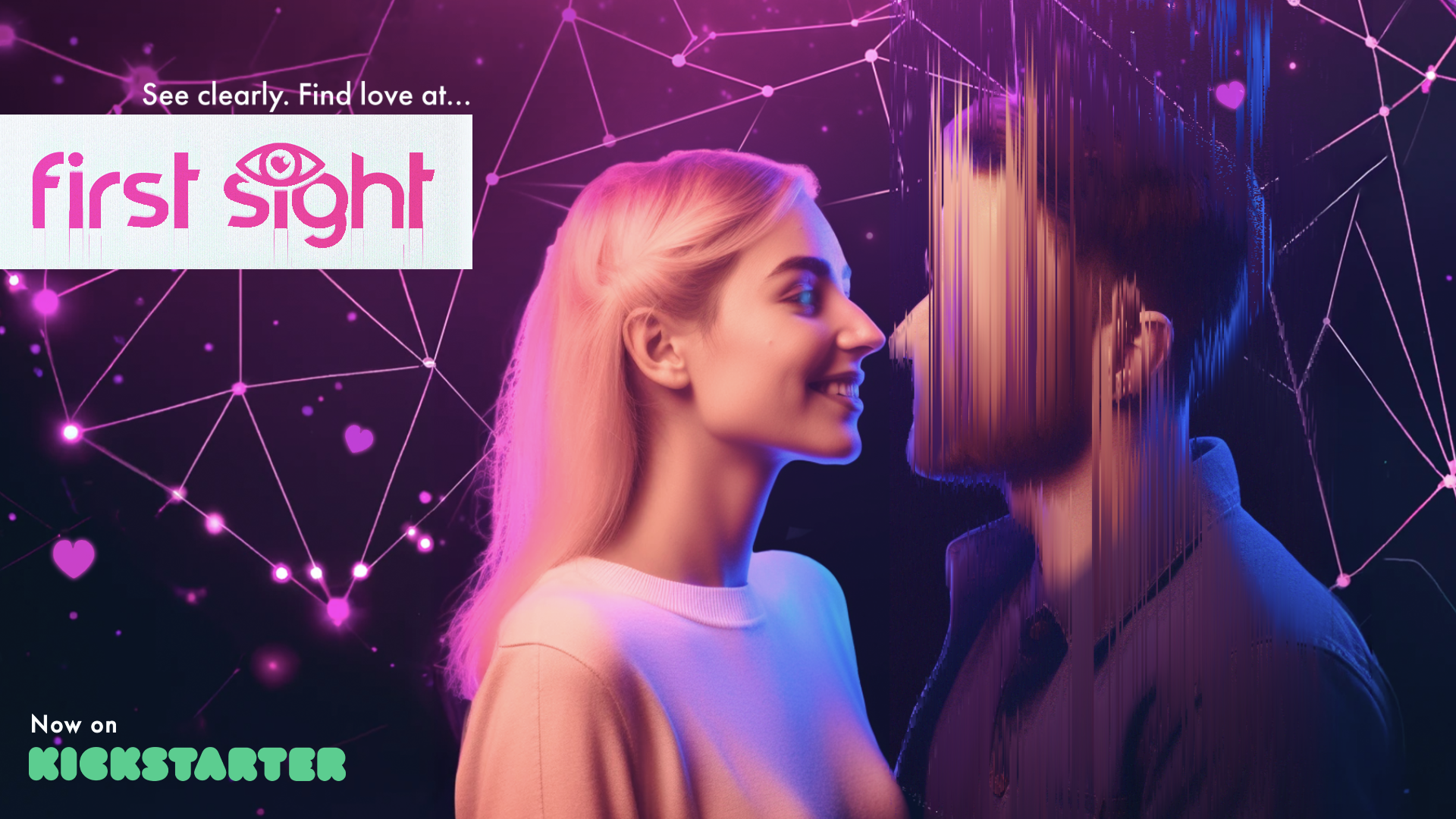
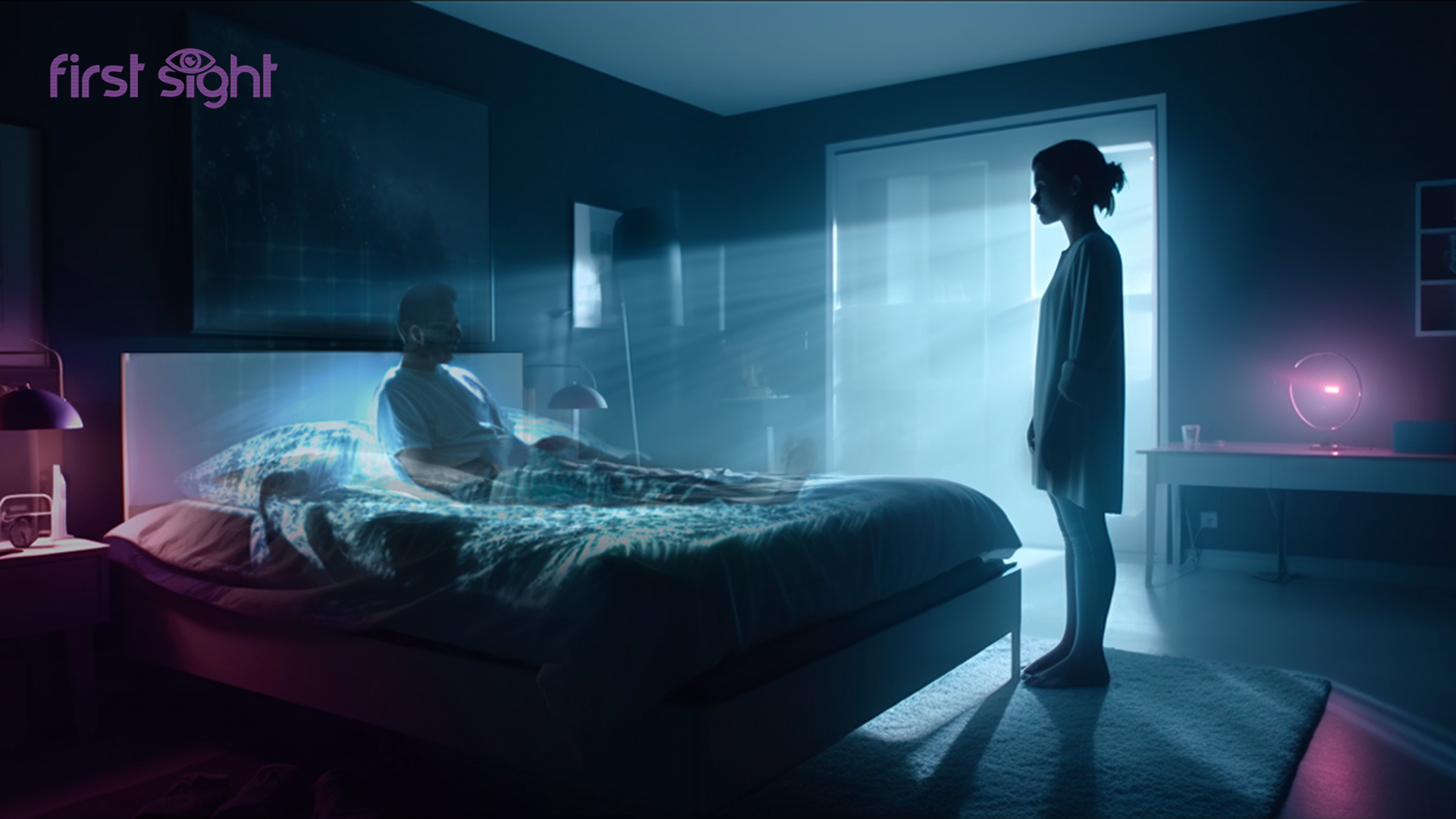
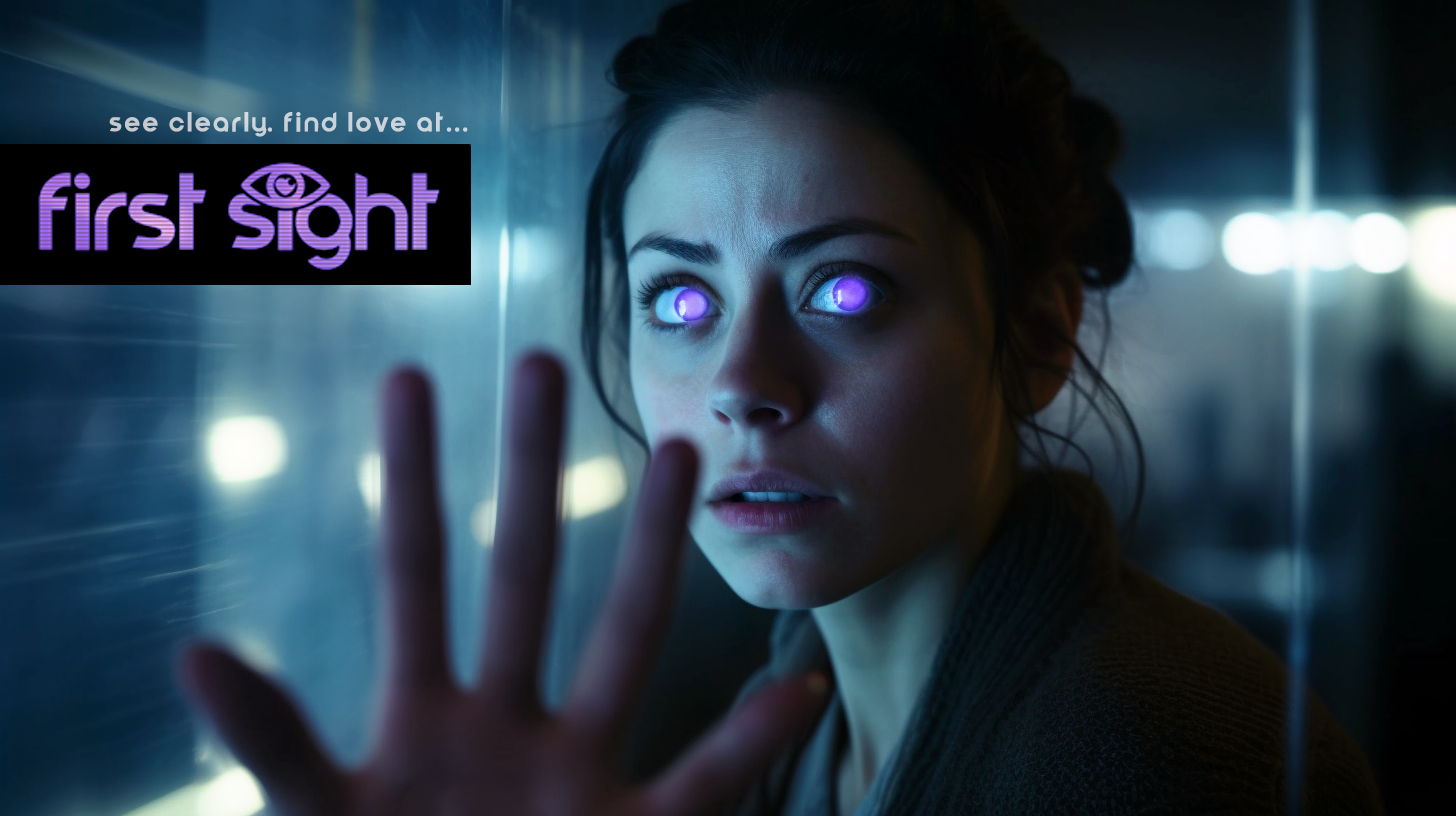
I’m now trying the same approach for my new sci-fi short, called First Sight. It tackles another different subgenre, with a Black Mirror-esque near-future story about AI-powered ‘smart’ contact lenses and finding connection in a tech-dominated world. It’s inspired by wearable technology already in development by some of the major tech companies and explores how they could influence our daily lives and relationships. Here’s the synopsis and teaser:
After the loss of her partner, Luna is finally ready to re-enter the world of dating, turning to smart contact lenses to overcome her anxiety. But when her quest for love takes a dark turn and her vision is held for ransom, she must outsmart a mysterious hacker to save her sight... and her date night.
If you’re interested in helping bring this new project to life and seeing the behind-the-scenes each step of the way, I would be incredibly grateful for any support!
The Kickstarter ends on May 25th.
I hope this has been an insightful quick look into my indie filmmaking experience. Every science fiction project I’ve directed has been a real labor of love, but despite the challenges and stress, it’s something I truly love doing and I hope to make the leap to feature films and television after First Sight!
The cost of your membership has allowed us to mentor new writers and allowed us to reflect the diversity of voices within fandom. None of this is possible without you. Thank you. 🙂


